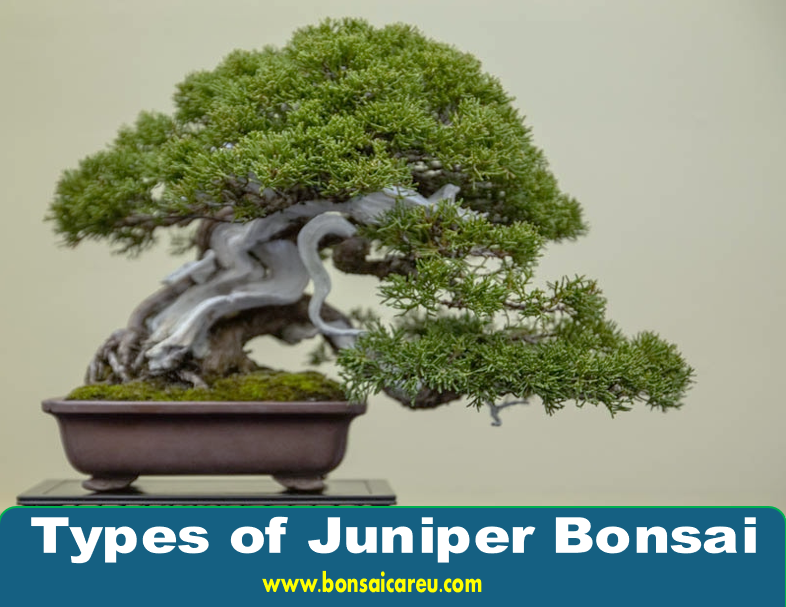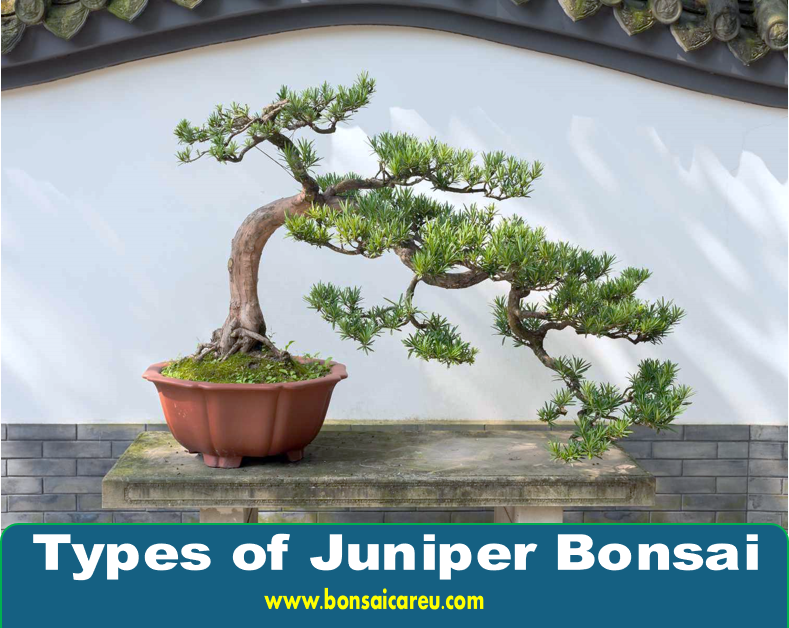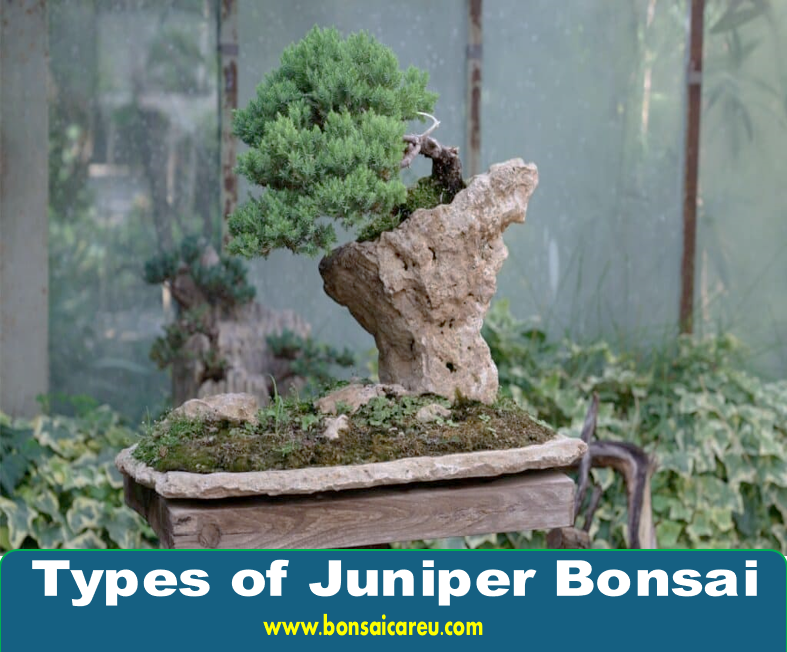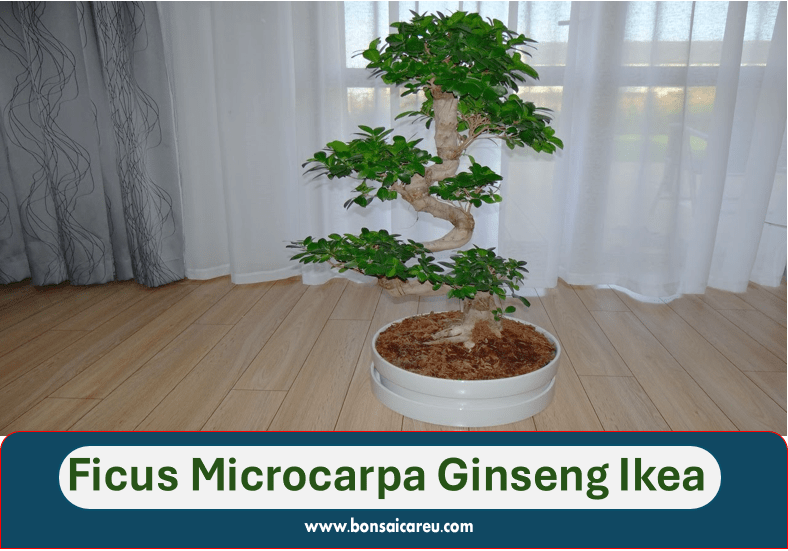Types of Juniper Bonsai: Juniper Bonsai include California juniper, Common juniper, Sierra Juniper, and Japanese needle Juniper. Juniper bonsai styles range from slanting to full-cascade, semi-cascade, twin trunks, and groups.
Juniper Bonsai enthusiasts often choose Chinese Juniper and Japanese Shimpaku for their scale-like foliage. The Japanese Shimpaku is a variety of Chinese Juniper, originally found in Japan’s mountains. Identifying juniper trees can be done by examining their cones. Male junipers have small yellow or tan cones, while female plants bear colorful berries.
Juniper bonsai trees can be styled in various shapes, such as informal upright, full-cascade, and twin trunks, offering a unique aesthetic appeal to bonsai enthusiasts.

Popular Juniper Bonsai Species
Discover the fascinating world of popular Juniper Bonsai species, including the Chinese Juniper and the Japanese Shimpaku. These bonsai trees with scale-like foliage offer diverse shapes and styles, such as slanting, informal upright, full-cascade, and semi-cascade, allowing for a unique and beautiful addition to any bonsai collection.
Chinese Juniper
The Chinese Juniper, scientifically known as Juniperus chinensis, is one of the most popular juniper species for bonsai cultivation. It is admired for its attractive, scale-like foliage and ability to develop a rugged, aged appearance over time. This species offers various varieties, each with unique characteristics and growth habits.
Japanese Shimpaku
The Japanese Shimpaku is a variety of the Chinese Juniper and is highly prized for its delicate, lush foliage and elegant, twisting branches. Its compact growth habit and ability to withstand frequent pruning make it a favorite among bonsai enthusiasts. The Shimpaku’s graceful appearance and fine texture make it a top choice for bonsai artists.
Common Juniper
The Common Juniper, or Juniperus communis, is a hardy species well-suited for bonsai cultivation. It is known for its adaptable nature and ability to thrive in various environmental conditions. With its striking blue-green foliage and resilient growth habit, the Common Juniper is a popular choice for beginner and experienced bonsai growers.

Factors To Consider
When choosing a Juniper Bonsai, several factors must be considered to ensure the tree’s health and successful growth. These factors include climate suitability, size and growth rate, and foliage type.
Climate Suitability
Before selecting a Juniper Bonsai, it’s crucial to consider the climate in which it will be grown. Junipers are hardy trees that can thrive in various climates, but choosing a species well-suited to the local climate conditions is essential. Some species are more tolerant of cold temperatures, while others prefer warmer climates. Ensure the chosen species can thrive in the specific climate of your location to promote the tree’s health and longevity.
Size And Growth Rate
Another important factor to consider is the size and growth rate of the Juniper Bonsai. Different species of Junipers vary in size, with some growing into large trees and others remaining small and compact. Consider the available space for the bonsai and choose a species that will fit well within the designated area. Additionally, be mindful of the growth rate, as some species may require more frequent pruning to maintain the desired shape and size of the bonsai tree.
Foliage Type
The foliage type of the Juniper Bonsai is a key consideration when selecting a species. Junipers exhibit a range of foliage types, including scale-like and needle-like foliage. Each type has its unique aesthetic appeal and growth characteristics. Consider the desired look and maintenance requirements when choosing a species based on its foliage type. Ensure the foliage type aligns with your aesthetic preferences and the level of maintenance you are willing to commit to the bonsai tree.
Juniper Bonsai Styles
Juniper bonsai trees are known for their versatility and can be styled in various ways to create stunning visual effects. Each style captures a different aspect of the natural growth patterns of juniper trees, creating a sense of harmony and balance in the miniature form. Here are the three main styles used in juniper bonsai cultivation:
Slanting Style
The slanting style, also known as the “shakan” style in Japanese, portrays the tree as being affected by strong winds or growing on a slope. In this style, the trunk emerges from the soil at an angle, creating a dynamic and captivating visual impact. The branches are trained to grow slightly asymmetrically to complement the slanting trunk, resulting in a sense of resilience and movement.
Informal Upright Style
The informal upright style, or “moyogi” style, represents the natural growth of a tree reaching for the sky. The trunk of the juniper bonsai grows vertically, with subtle curves and movements that mimic the organic form of mature trees in nature. This style often features a slight slant or curvature, adding character and visual interest to the overall composition.
Cascade Style
The cascade style, known as “kengai,” emulates the image of a tree growing on a mountain cliff, with its branches cascading downwards. In this style, the trunk extends vertically from the soil and bends sharply downwards, creating a dramatic and picturesque effect. The foliage and branches drape gracefully over the edge of the container, evoking a sense of resilience and adaptability in challenging environments.
Identifying Juniper Bonsai
Juniper bonsai trees are known for their distinctive features, making them easily identifiable. Understanding the key characteristics can help enthusiasts recognize different types of juniper bonsai.
Foliage Characteristics
The foliage of juniper bonsai is needle-like and comes in shades of green, blue, or silver. It is arranged in whorls around the branches, giving the tree an attractive appearance.
Trunk Features
Juniper bonsai trees often have twisted, gnarled trunks that exude age and character. The bark can range from reddish-brown to gray, adding to the tree’s visual appeal.
Popular Cultivars
Some popular cultivars of juniper bonsai include the Chinese Juniper and the Japanese Shimpaku. Each cultivar has its unique characteristics, such as variations in foliage color and growth patterns.
Caring For Juniper Bonsai
Juniper bonsai comes in various types, including California juniper, common juniper, Sierra juniper, Japanese needle juniper, and more. When caring for your Juniper bonsai, it is important to identify the specific type you have to ensure proper care and maintenance.
Different types of Juniper bonsai can be shaped into slanting, informal upright, full-cascade, and semi-cascade, depending on the owner’s preference.
Watering And Sunlight Needs
Juniper Bonsai requires moderate watering and ample sunlight to thrive.
- Water the bonsai when the topsoil feels dry to the touch.
- Place the bonsai in a sunny location, ensuring it gets 6 hours of sunlight daily.
Pruning And Shaping
Regular pruning and shaping are essential for maintaining the health and aesthetic appeal of Juniper Bonsai.
- Trim the excess growth to maintain the desired shape.
- Wire the branches to achieve the desired bonsai style.
Pests And Diseases Management
Preventing pests and diseases is crucial for the well-being of your Juniper Bonsai.
| Pests | Diseases |
|---|---|
| Spider mites | Root rot |
| Aphids | Powdery mildew |

Frequently Asked Questions For Types of Juniper Bonsai
What Junipers Are Best For Bonsai?
Due to their scale-like foliage, Chinese junipers and Japanese shimpaku are popular for bonsai. Junipers come in various styles, such as slanting, upright, and cascade. Identifying them can be done by observing their cones or berries. Junipers are versatile for creating unique bonsai shapes.
How Do I Know What Kind Of Juniper Tree I Have?
To identify your juniper tree, examine its cones. Male tree cones are small, yellow, or tan. Female trees produce colorful berries, which are modified cones. Berries can be blue or red, depending on the species.
What Are The Different Shapes Of Juniper Bonsai?
Juniper bonsai come in various shapes, such as slanting, informal upright, full-cascade, and semi-cascade. Other styles include twin and triple trunks, groups, and rafts, with formal upright and broom styles less common.
How Do You Identify A Juniper Bonsai Tree?
Identifying a juniper bonsai tree is done by observing its scale-like foliage, which varies among cultivars.
What Are The Different Types Of Juniper Bonsai?
Several types of Juniper Bonsai include California Juniper, Common Juniper, Sierra Juniper, Juniperus Sabina, Juniperus Chinensis, Japanese Needle Juniper, Juniperus Virginiana, and more.
What Are The Best Junipers For Bonsai?
The two most popular Juniper species for Bonsai are Chinese Juniper and Japanese Shimpaku. The Japanese Shimpaku is a variety of Chinese Juniper, originally found in the mountains of Japan.
Conclusion
Exploring the diverse types of Juniper Bonsai reveals a world of unique beauty and elegance. With varieties like Chinese Juniper and Japanese Shimpaku, each bonsai tree tells a story of craftsmanship and nature’s artistry. Embrace the art of bonsai with these exquisite Juniper varieties.


